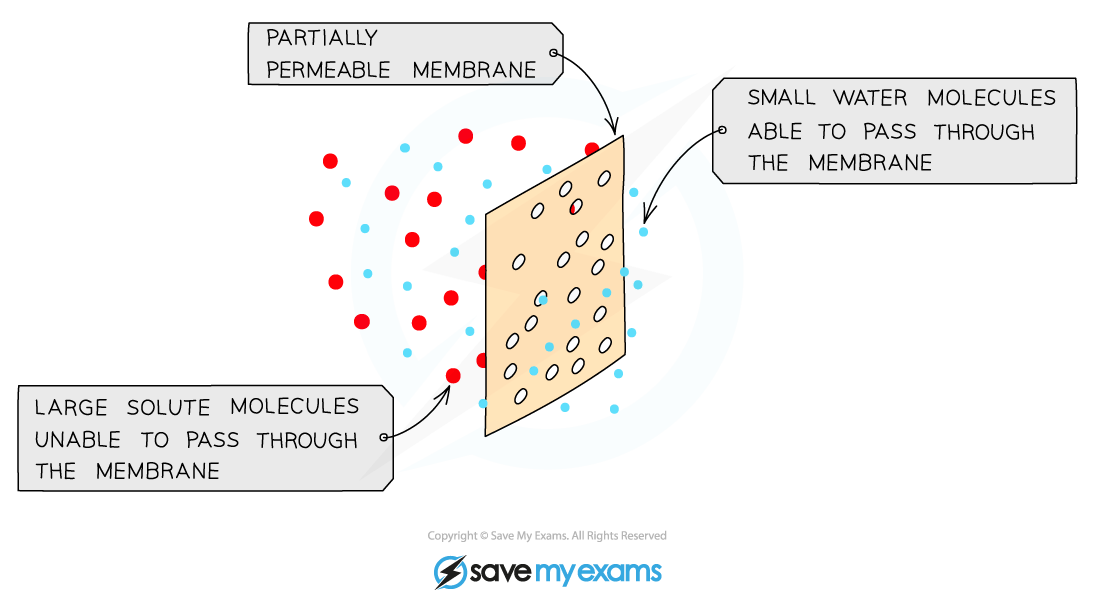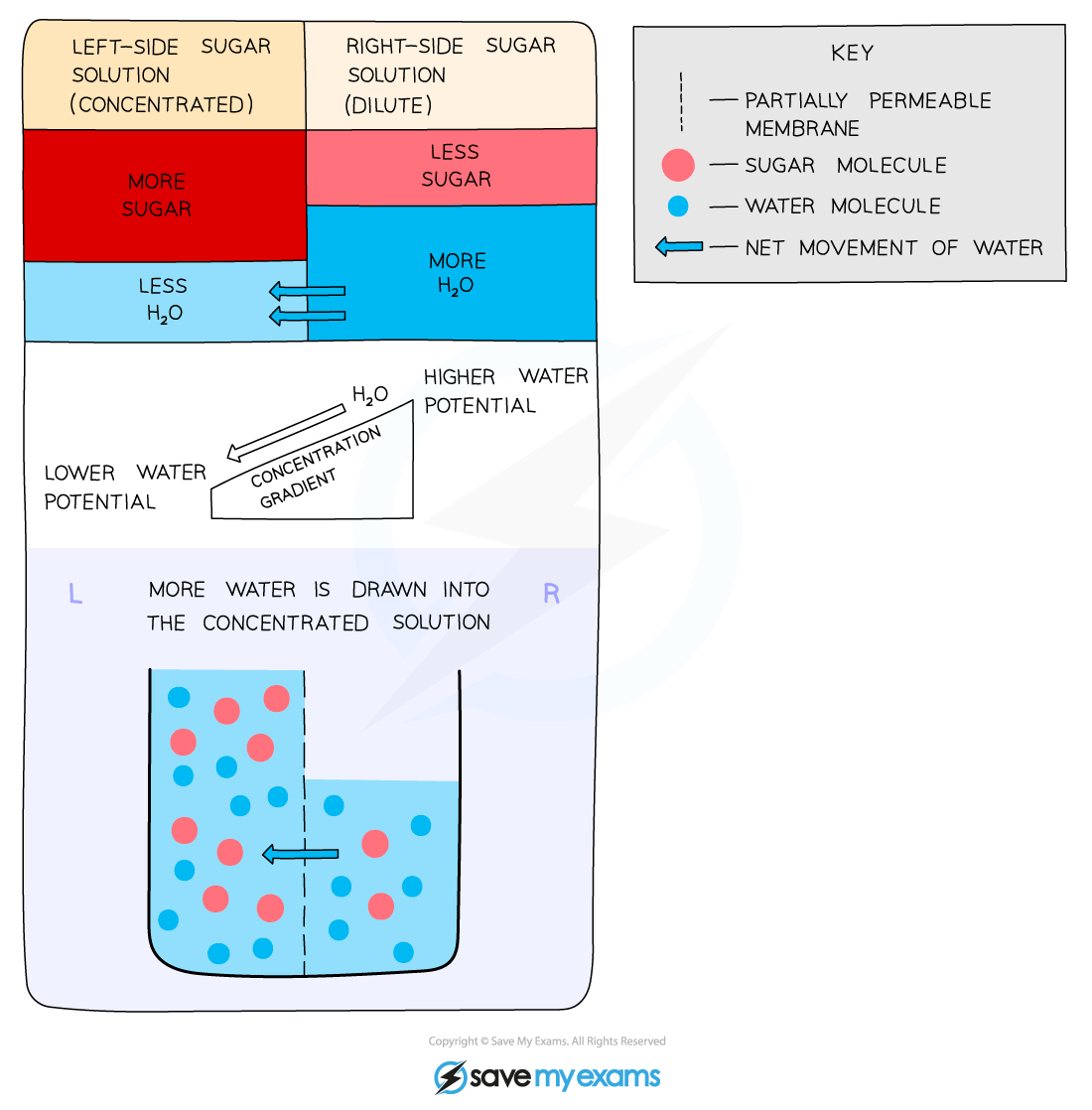Osmosis (Cambridge (CIE) AS Biology): Revision Note
Exam code: 9700
The process of osmosis
All cells are surrounded by a cell membrane which is selectively permeable
Water can move in and out of cells by osmosis
Osmosis is the diffusion or net movement of water molecules from a dilute solution (high water potential) to a more concentrated solution (low water potential) across a selectively permeable membrane
The cell membrane is selectively permeable which means it allows certain molecules (like water) through the bilayer


Examiner Tips and Tricks
Water can pass through the phospholipid bilayer because water molecules are small molecules that can pass between phospholipids in the cell membrane.
Although water molecules are polar, they can still pass through the bilayer because of their small size.

Unlock more, it's free!
Did this page help you?